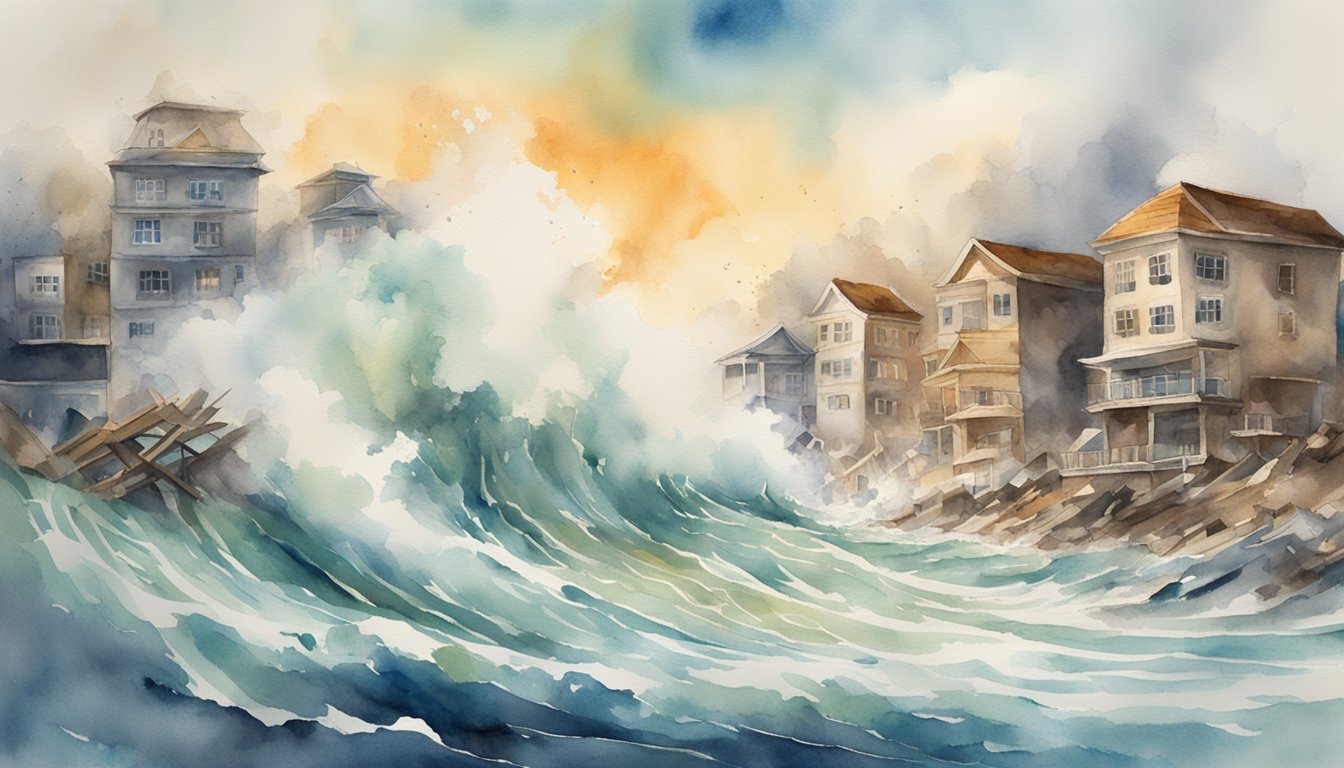Understanding Tsunamis
Formation and Causes
Tsunamis are a series of large waves generated by a sudden displacement of water in the ocean or other large water bodies. Most frequently, they are caused by undersea earthquakes occurring at converging tectonic plate boundaries. Over 80% of likely tsunamis since 1900 have been generated this way, as noted by the Global Historical Tsunami Database. Other causes include volcanic eruptions, landslides, and in rare cases, meteorite impacts.
When an earthquake happens in a subduction zone, where one tectonic plate slides beneath another, the seafloor is suddenly lifted or dropped. This vertical displacement of the seabed results in the creation of tsunami waves, which can travel great distances across the ocean.
Characteristics and Measurement
Although tsunamis are commonly referred to as “tidal waves,” they are not caused by tides or other astronomical phenomena. They differ from typical ocean waves because they involve the vertical displacement of the entire water column. In addition to their large size, tsunamis also travel at high speeds. Depending on the depth of the ocean, tsunami waves can reach speeds of up to 500 mph (800 km/h).
The height of a tsunami wave as it approaches the shore can reach over 100 feet (30.5 meters) in some cases, as stated by National Geographic. They can cause massive destruction, especially in coastal areas, as they come ashore with powerful torrents of water, debris, and strong currents.
Tsunami Warning Systems
Due to the devastating consequences of tsunamis, scientists have developed tsunami warning systems to help predict and forecast these events. These systems rely on a combination of data from seismic, ocean, and atmospheric-monitoring instruments, as well as computer models that simulate how tsunamis propagate across the ocean.
When a potentially tsunami-generating earthquake is detected, these warning systems issue alerts through various channels, such as radio, television, and online platforms. In coastal areas, sirens and other alarm systems can be activated to warn people to seek higher ground or evacuate.
Besides technological warnings, there are also natural warning signs of an impending tsunami, such as strong ground shaking, rapid ocean water recession, or the sound of a roaring ocean. Being aware of these signs and having an evacuation plan can save lives and minimize the damage caused by tsunamis.
Impact and Response

Historical Tsunamis and the Environment
Tsunamis can be highly destructive natural disasters, causing immense damage to land and coastline areas. A notable example is the Indian Ocean Tsunami of 2004, which affected several countries, leading to widespread devastation and loss of life. Similarly, the 2011 Tōhoku earthquake and tsunami in Japan caused significant infrastructure damage and displacement of coastal communities.
Tsunamis can extend inland, depending on the geography and depth of an area. For instance, during the historical event in the Indian Ocean, waves reached as far as 1.2 miles (2 km) inland in some places. Tsunamis can impact animal species as well, often disrupting their habitats or causing deadly effects.
Safety and Preparedness
Tsunami preparedness is crucial for coastal areas at risk, as they are prone to these natural disasters. International organizations such as NOAA help provide warning systems and educational resources on how to respond when a tsunami occurs. People living in coastal communities should be aware of tsunami evacuation routes, as well as the importance of moving to high ground in the event of a tsunami.
Some general steps for tsunami safety include:
- Knowing your community’s warning sirens and signals
- Having an emergency kit and communication plan ready
- Being familiar with evacuation routes and safe zones
Recovery and Reconstruction
Recovery and reconstruction efforts post-tsunami can be immense, as seen in the aftermath of the 2011 Tōhoku event that occurred in Japan. The reconstruction efforts involved repairing affected infrastructures, including buildings, transportation systems, and power supply facilities. Furthermore, maintaining physical and mental health becomes essential for individuals and communities during the recovery process. For example, the Disaster Distress Helpline can provide support for those in need.
Overall, understanding the impact of tsunamis on the environment, being prepared for such events, and implementing recovery and reconstruction strategies can significantly reduce the damages, losses, and disruptions caused by these destructive ocean waves.

